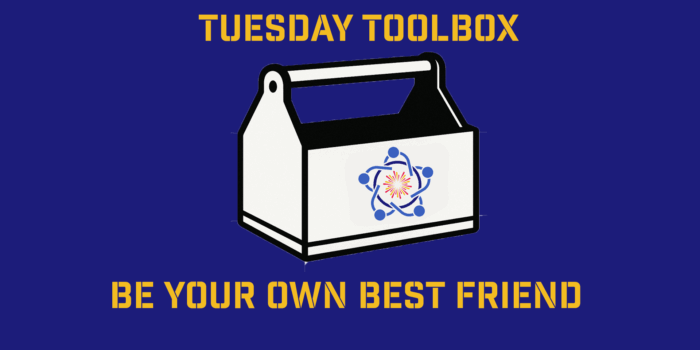My Wednesday Wish for You: To Be Your Own Best Friend We often push ourselves harder than anyone else ever…
Want to be WISER? Read how.
You can read a million articles and books on making better decisions, avoiding bias, and raising your EQ, but they’ll do you no good if your emotions regularly swamp your ability to think through problems constructively.
A CEO or founder can read about the value of intellectual humility. But if they can’t get over their need to prove they’re the smartest in the room, they’ll never be able to see how they might be wrong. Strategic quitting is sometimes the smartest move. But if an employee is worried about saving face, they’ll carry on too long. No matter who you are, dfficult conversations go better if you lead with respect, experts insist. Kneejerk outrage at those who disagree with you gets in the way.
All of which is a long way of saying that good decision making, healthy relationships, and all-around success in life depend on getting your emotions under control. What’s the best way to do that? An 80-year Harvard study offers a straightforward model anyone can follow.
80 years of wisdom on managing strong emotions
The Harvard Study of Adult Development is one of the world’s longest running longitudinal studies: It has followed more than 700 men since 1938. Its most famous conclusion is that, when it comes to living a long and happy life, the quality of your relationships matters most. Less discussed is what the study has uncovered about exactly how to keep those relationships strong.
In their recent book The Good Life, Robert Waldinger and Marc Schulz, the current director and associate director of the study, explain that the most emotionally intelligent people don’t ignore their emotions or allow them to unthinkingly drive their actions. Instead, they employ the Wiser model to process their feelings and actively choose a wise course of action. A recent Big Think article by Kevin Dickinson helpfully lays out what each letter of Wiser stands for.
Watch
If you want to respond well to an emotion, you first need to take a pause, name it, and understand what triggered it.
“In some cases, this period may only last a moment or two; in others, it may require that you set aside an hour or evening. During that time, try to bring your curiosity to the entire situation. What was the environment? Was the situation unusual? Who were you interacting with, and what do you know about this person? What may you have missed that may prove important?” explains Dickinson.
Interpret
OK, now that you have some basic observations, it’s time to interpret them. Have you made any assumptions about the other parties involved in the situation? Might those assumptions be flawed? Are there other factors–from earlier frustration to exhaustion–contributing to your emotional response?
“Many situations are ambiguous and unclear, and it is on this canvas of ambiguity that we can project all sorts of ideas. If we’ve only done a quick-and-dirty job of observing in the watch stage, we probably don’t have all the information we could have about what’s really going on, which leads to hasty conclusions,” Waldinger and Schulz write in the book.
Select
Once you have a full picture of what’s actually going on, you’ll be better placed to actively select a course of action that will get the results you want. If you realize your frustration at your confused new employee is driven more by your insane schedule than their incompetence, you can skip snapping at them and instead look to clear some time to help them get up to speed.
“The key is to try to slow things down where you can, zoom in, and move from a fully automatic response to a more considered and purposeful response that aligns with who you are and what you are seeking to accomplish,” explain Waldinger and Schulz.
Engage
You have a plan. Now is the time to put it into action. The options here are as variable and diverse as the emotional situations we find ourselves in, but whatever you’re dealing with, considered action is better than just letting your feelings carry you along (or sticking your head in the sand).
Reflect
How did your plan turn out? Did you get the response you hoped for both from others and in terms of your own emotions? By making us think about what went well and what went less well, the reflection stage provides important information we can use to improve our response next time. If you skip this step, you let a key opportunity to learn go to waste.
Is it easy to implement the Wiser model when you’re shaking with rage or burning with embarrassment? Certainly not. Plenty of folks require years of therapy to get this mostly right–and there’s zero shame in that. But just being familiar with the Wiser acronym can help you take a breath and think through everyday conflicts and emotional upheavals in a way that will boost your EQ, improve your relationships, and hopefully make you happier and more successful.
BY JESSICA STILLMAN, CONTRIBUTOR, INC.COM



